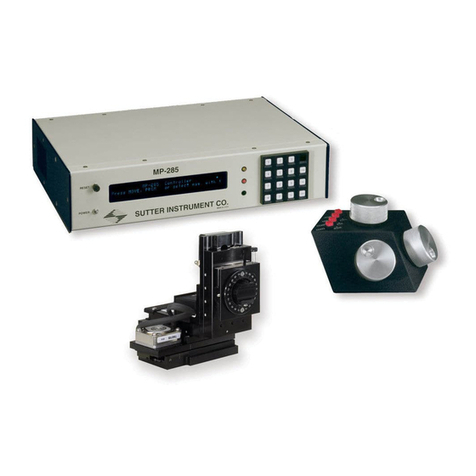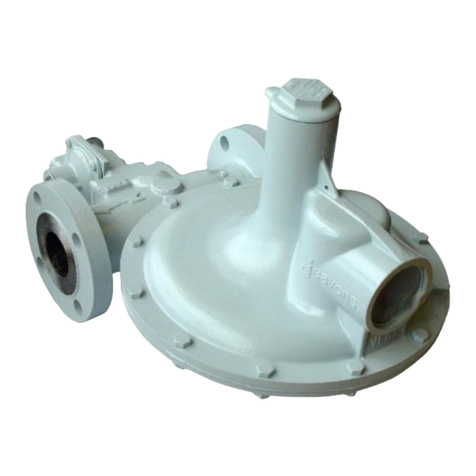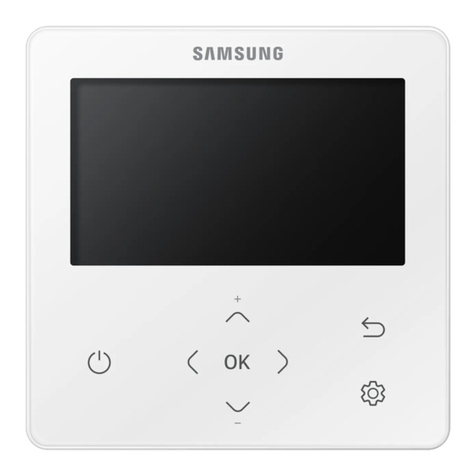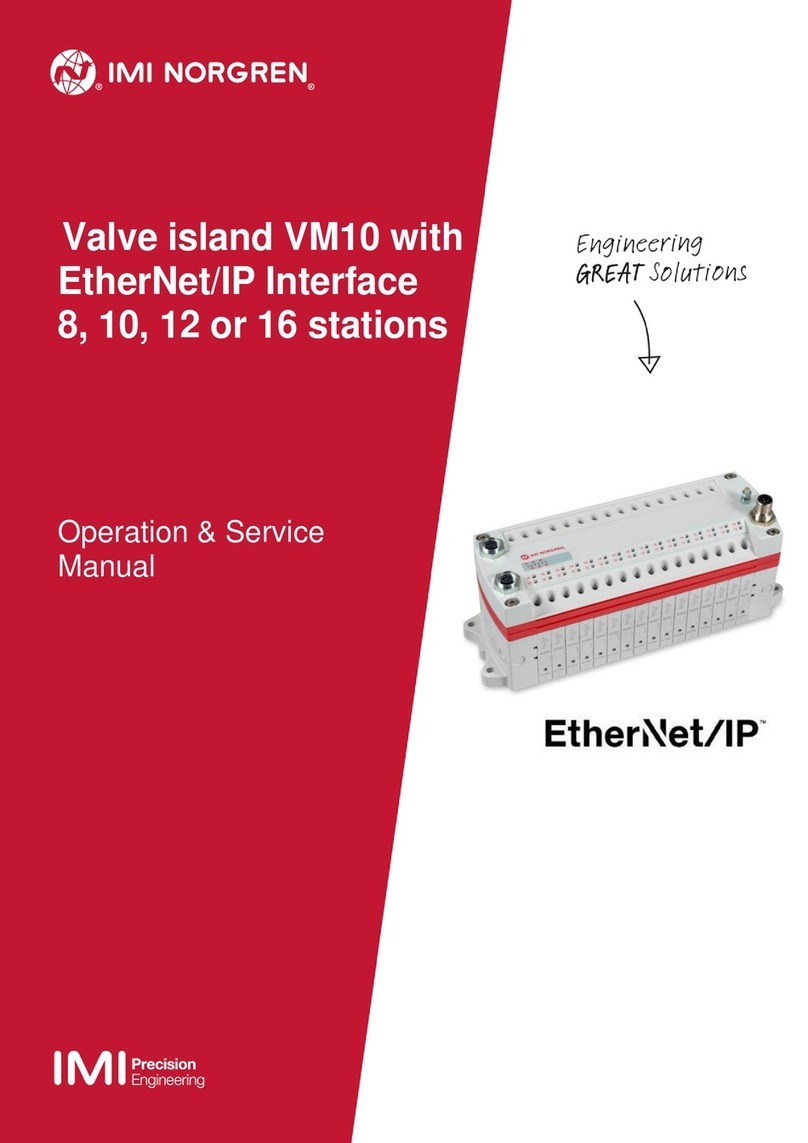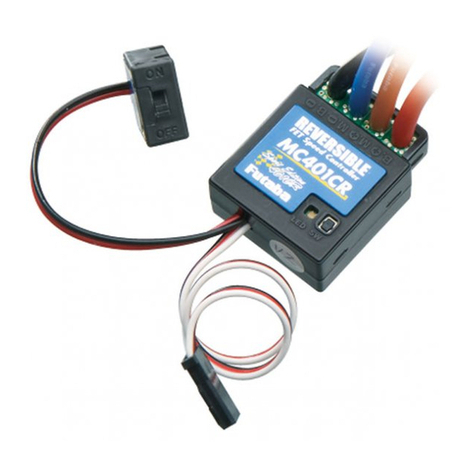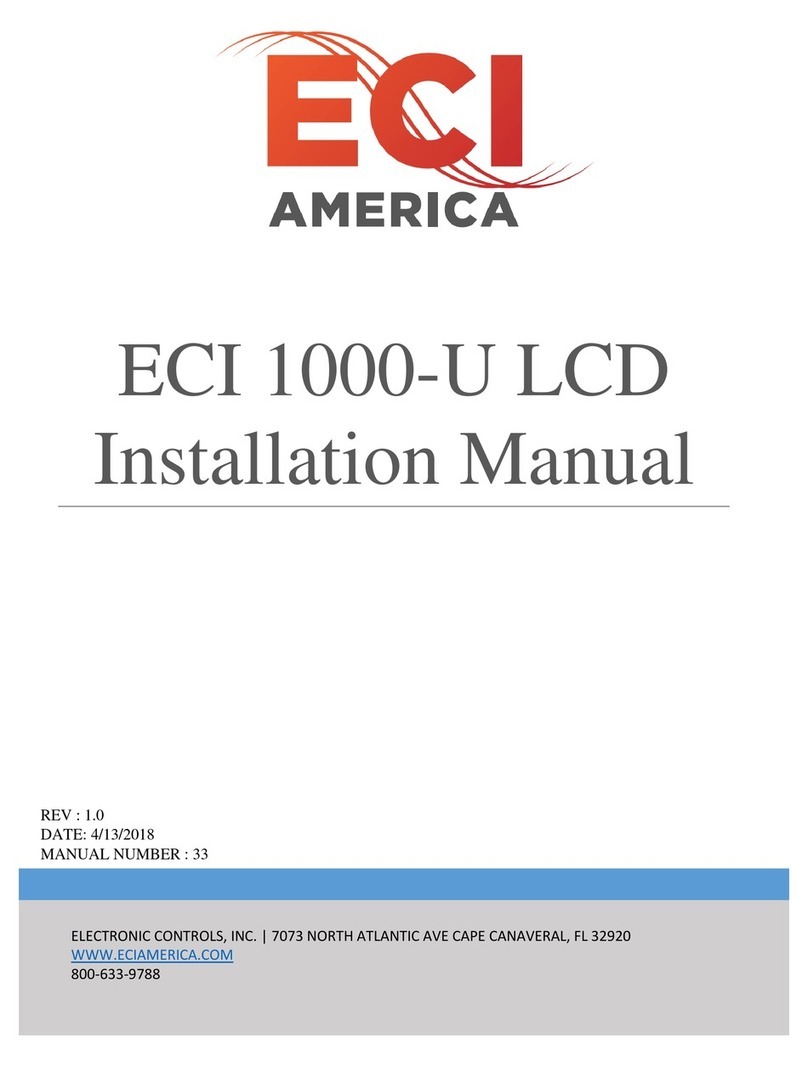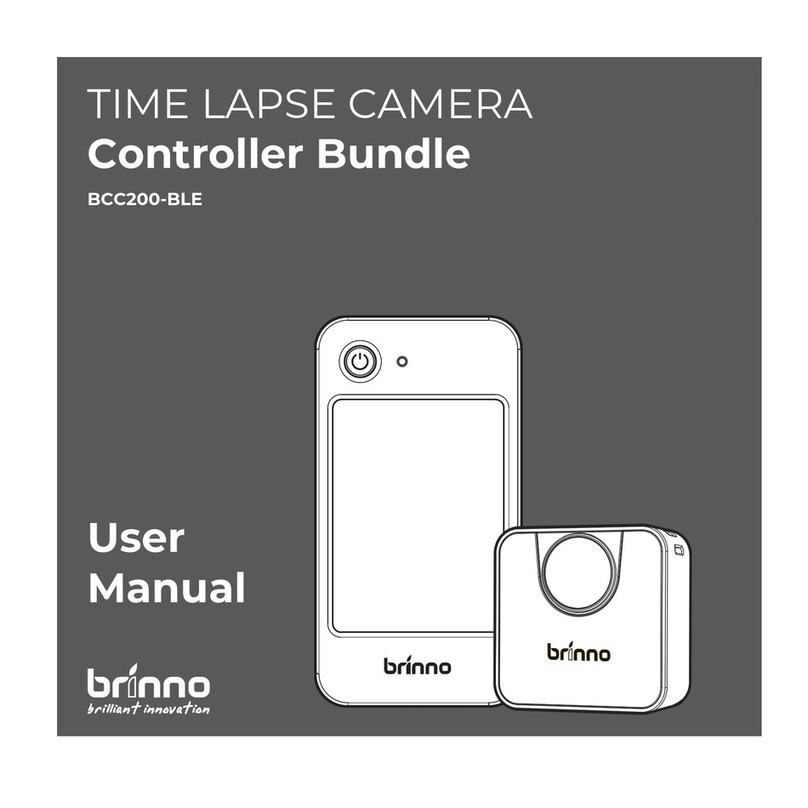Robot-Solutions RS160D User manual

Robot-Solutions 2005 RS160D-Servo www.robot-solutions.com
Users Guide
RS160D PMDC Servo Controller
Robot-Solutions, LLC

Robot-Solutions 2005 RS160D-Servo www.robot-solutions.com
Users Guide
Table of Contents
Specifications ................................................................................................................1
Overview.........................................................................................................................2
Factory Default ..............................................................................................................3
Customization..............................................................................................................4
Channel Mixing (x).......................................................................................................5
Input Control Curve (C)................................................................................................5
Variable Brake (B)........................................................................................................5
R/C input dead band (i)................................................................................................5
Minimum Drive (M).......................................................................................................6
Power Slew Rate (s)....................................................................................................6
R/C input calibration.....................................................................................................6
Saving custom settings (w)..........................................................................................7
User Interface.................................................................................................................8
Internal Register Summary ...........................................................................................9
Internal Register Description......................................................................................12
Brake (B)....................................................................................................................12
Baud Rate (b).............................................................................................................12
R/C Input Curve (C)...................................................................................................12
Copy Parameters (c)..................................................................................................12
Derivative (velocity) Gain (D).....................................................................................12
Error Dead Band (d)...................................................................................................13
Back-EMF Factor (E).................................................................................................13
Encoder value (e).......................................................................................................13
Input Factor (F)..........................................................................................................13
Temperature Protection Override (f)..........................................................................14
Integral Gain (I)..........................................................................................................14
R/C Input Dead Band (i).............................................................................................14
Feedback Select (J)...................................................................................................14
Control Input Select (j)...............................................................................................14
Local Echo Option (l) .................................................................................................15
Minimum Drive (M).....................................................................................................16
Servo Mode (m).........................................................................................................16
R/C Pulse High Limit (N)............................................................................................16
R/C Pulse Low Limit (n) .............................................................................................17
Proportional (Position) Gain (P).................................................................................17
Position Set Point (p).................................................................................................17
Factory Preset (Q) .....................................................................................................17
Servo Update Rate (r)................................................................................................18
Power Slew Rate (s)..................................................................................................18
Torque Limit (T) .........................................................................................................18
Torque Set point (t)....................................................................................................18

Robot-Solutions 2005 RS160D-Servo www.robot-solutions.com
Users Guide
Unit Amount Minimum Move (U)................................................................................19
Unit Amount Manual Move (u) ...................................................................................19
Velocity Limit (V)........................................................................................................19
Velocity Set point (v)..................................................................................................19
Write User Memory (w)..............................................................................................19
Channel Mixing (x).....................................................................................................20
Menu Items...................................................................................................................20
Output Drive values.....................................................................................................21
Control Period..............................................................................................................21
Position & Encoder values .........................................................................................21
Velocity.........................................................................................................................21
Torque ..........................................................................................................................21
Tuning, discovering servo PID Gain values ..............................................................22
Off Mode (0):..............................................................................................................22
PWM Mode (1):..........................................................................................................22
Torque Mode (2):.......................................................................................................22
Velocity Mode (3):......................................................................................................22
Position Mode (4):......................................................................................................23
Indicators and Outputs ...............................................................................................23
Status LED.................................................................................................................23
Temp LED..................................................................................................................23
COAST LED (Aux, Left & Right) ................................................................................23
FWD/REV LED (Aux, Left, Right)...............................................................................23
Limitations and Warrantees........................................................................................24
Support.........................................................................................................................24
General Guidelines......................................................................................................24
Appendix A: System Software Updates.....................................................................25
Appendix B: Input methods........................................................................................26
Control Input Methods................................................................................................26
Serial ......................................................................................................................26
R/C control .............................................................................................................26
Analog Signal .........................................................................................................26
Step & Direction .....................................................................................................26
Feedback Input Methods............................................................................................27
Encoder..................................................................................................................27
Analog Signal .........................................................................................................27
Appendix C: Interface Wiring Information.................................................................28
Analog........................................................................................................................28
Step & Direction.........................................................................................................29
Incremental Encoder..................................................................................................30
Manual Move .............................................................................................................31
Appendix D: Example applications............................................................................32

Robot-Solutions 2005 RS160D-Servo www.robot-solutions.com
Users Guide
Factory Default...........................................................................................................32
Giant R/C Servo.........................................................................................................33
Set Up & Tuning .....................................................................................................33
CNC (Stepper motor) servo .......................................................................................35

Robot-Solutions 2005 RS160D www.robot-solutions.com
Users Guide - 1 -
Specifications
The RS160D servo uses custom software to implement a 2.5 channel high-powered
servo system. The servo uses a quadrature encoder feedback mechanism to control
torque, velocity, and position of the output.
•Enclosure size: 8.80” x 4.80” x 2.40” 3.40” high including fan
•Weight with enclosure: 2.5 lb.
•Three 5 pin finger latching encoder inputs.
•Dual main channels 160 Amps each
•Current limiting on both main channels.
•Thermal protection.
•Connector for external power driver module for third channel operation.
•4-42v battery operation1.
•Large power connector accepts up to 0 AWG wires.
•Full RS232 serial command and setup.
•Standard RS232 communications N81- 4800,9600,19200 or 38400 baud.
•Serial boot loader for future RS232 servo software updates (no special
programming hardware required). See appendix A.
•Multiple-operating modes:
oOff
oNormal PWM
oTorque
oVelocity
oServo-Winch-Position
oServo-Position
•Thermal power monitoring and limiting.
•Manual control inputs (Up/Down) for each channel (Left, Right and Aux) to
facilitate rigging (DB9M). See Appendix B.
•User selected control inputs: Serial Command, Analog Voltage, R/C Pulse or
Step & Direction (CNC).
•User selected servo feedback: Encoder or Analog Voltage
•User adjusted hardware current limiting (Potentiometer adjustment).
•User adjustable software current limiting (Torque limit).
•Robust signal processing for smooth, reliable fail-safe operation.
•Indicator LED’s show direction, power, over-temperature, and board status.
1 If the main battery voltage is over 36V nominal, jumper J7 must be moved to the HV position and a second battery
for the logic supply must be connected to the HV SUPPLY connector. The HV supply can range from 4V to 36V.
Note the GND terminal on the logic supply and the GND terminal on the main power connector are tied together. If
tapping off of the center of a multiple series battery for the logic supply, do not provide a second ground to the logic
connector.

Robot-Solutions 2005 RS160D www.robot-solutions.com
Users Guide - 2 -
Overview
The RS160D brushed Motor Controller provides a flexible platform for controlling
brushed DC motors. The controller has two power drivers built in and a standard
OSMC connector for a third power driver.
The default factory configuration supports operation with R/C radios for traditional
combat and remote control robotics applications. The factory default is easily modified
and stored in non-volatile (configuration) memory and restored whenever power is
applied. In factory default mode the Left R/C channel controls forward reverse motion
and the Right channel controls steering.
All configuration and control parameters are set via serial menus and configuration
strings. The serial interface supports standard RS232 signaling from 4800 to 38,400
baud using a normal DB9 cable. The entire unit may be configured and controlled via a
PC or Laptop using a terminal emulator (e.g. Hyperterm).
The RS160D supports a variety of servo operation modes (position, velocity, torque &
power) using a variety of input and feedback methods. The RS160D accepts the
following control input signals: serial commands, Analog voltage (0-5v), Radio Control
signaling or Step & direction. For servo feedback the RS160D accepts either analog
voltages (0-5v potentiometer) or quadrature encoders. Inexpensive industrial encoders
can be obtained from www.usdigital.com and the RS160D includes sockets compatible
with US Digital 5 pin finger latching cabling. The relationship between the various
control inputs output are set by serial configuration commands and the serial interface is
always available for adjusting parameters regardless of the operating mode.
Some examples of systems possible with the RS160D
1. A large R/C style servo can be created by combining the R/C control input with
the analog voltage feedback.
2. Using R/C input and encoders enables velocity control which is superior for
handling of remote control robots.
3. Serial input with encoder feedback enables machine controllable subsystems,
such as steering or brake controllers in large vehicles.
4. Step & Direction input with encoder feedback simulates large high powered step
motors with inexpensive PMDC motors. The step & direction interfaces directly
with CNC software.
The RS160D can store up to four unique sets of configuration data. The Controller
automatically loads the last saved or recalled set upon power up, supporting unattended
operation.

Robot-Solutions 2005 RS160D www.robot-solutions.com
Users Guide - 3 -
Factory Default
As shipped from the factory the RS160D firmware will boot into a default minimal
function mode. The feature set is as follows:
1. Basic PWM control: 95%2reverse to 95% forward power.
2. R/C input control, +/- 10us dead band.
3. Dual stick (no channel mixing).
4. Normal R/C calibration.
5. Mild input curve.
6. 100% brake with neutral command
7. .1 second power slew rate
8. Serial communications set at 38,400 baud.
At any time the user can reset the unit to the factory values with a simple command via
the terminal interface. The RS160D uses a standard DB9 RS232 cable and should
connect to any PC or laptop computer. Newer computers may only have USB
connectors and an inexpensive USB to Serial adapter may be used. Connect a terminal
emulator (Hyperterm) with the following settings:
•38400 baud
•8 bit no parity
•One stop bit
At the prompt type in the following characters:
@0sQ0<cr> (<cr> represents the ENTER key.)
If you desire single stick control type in the following string instead:
@0sQ1<cr>
NOTE: default values are not stored in non-volatile memory by default. You need to
write the values out before they “stick”. The command to do this is:
@0sw0<cr>
The non-volatile store and how to use it is described in a later section.
2For reasons related to the hardware current limiting logic 100% power is not allowed.

Robot-Solutions 2005 RS160D www.robot-solutions.com
Users Guide - 4 -
Customization
There are a variety of customizations that can be applied to the RS160D:
1. Channel Mixing for single or dual stick operation
2. Calibration of R/C inputs
3. Adjustable control curves
4. Control Dead band
5. Minimum Drive values for output
6. Variable braking when neutral
7. Variable power slew rate
8. Up to four different sets of customizations may be stored and recalled.
What follows are customizations that apply to the default factory configuration. These
registers are described in detail in this section and primarily apply to simple R/C control
of power – a typical remote control robot configuration. There is a complete description
of all customization registers further on in this document under Internal Register
Description.
In general, configuration parameters are entered in the following form:
@{channel}{s,g,a}{register}{value}
Each command starts with the @ character. The second character is a number
indicating which channel. The channels are numbered as follows:
0 Left R/C input or Power output
1 Right R/C input or Power output
2 Aux R/C input or Power output
3 Flip R/C input only
The third character indicates the operation:
s = set the value into the register
g = Get the value stored in non-volatile memory
a = Get the actual current operating value
Note: for some commands the programmed value is not acted upon until the system is
reset, hence the ‘a’ modifier.
The fourth character is the “register” that contains the value being adjusted
The final field is a signed decimal number (i.e. it can be negative). If this number is left
out a ‘0’ will be used instead.
All commands are terminated with a Carriage return (enter) <cr>.

Robot-Solutions 2005 RS160D www.robot-solutions.com
Users Guide - 5 -
A typical command might be “Set Left Channel Drive 250” and would look like this:
@0sd250
The command to read the drive for the Left Channel and print it out would look like this:
@0gd
Channel Mixing (x)
Channel mixing is a global value not associated with R/C input channels or PWM output
channels. The “channel” value is ignored. The value can be either 0 (Tank) or 1
(Mixed). Mixing uses the Left channel as throttle and mixes in the Right channel as
steering. This is commonly used to implement single stick control for steering & throttle
in remote control robots.
@0sx0 – Disable Mixing
@0sx1 – Enable Mixing
Input Control Curve (C)
A variable exponential control curve can be applied to the R/C input. The curve value
applies to all channels. The amount ranges from 0, which is flat, to 7, which represents
a fairly aggressive curve.
@0sC{0-7}
The factory default is a mild curve of 3.
Variable Brake (B)
When control sticks are in neutral position the RS160D can apply a variable amount of
braking effort. Braking varies from 0 (coasting) to 31 (100%). Braking is regenerative
and will generate current and re-charge the supply battery. The string to set the brake
amount:
@{0, 1 or 2},sB{0-31}
Braking is specified independently for the Left, Right or Aux channels, hence the 0, 1 or
2 in the first field.
The Factory default is 100% brake
R/C input dead band (i)
Specifying the R/C input dead band can help prevent jitter when control sticks are in
neutral position. The dead band is specified in +/- microseconds.

Robot-Solutions 2005 RS160D www.robot-solutions.com
Users Guide - 6 -
@{0, 1, 2, or 3}si{0-63}
Factory default value is +/- 10 microseconds.
Minimum Drive (M)
Often robotic drive systems have significant friction to overcome before the robot
moves. Minimum drive helps compensate for that by boosting the PWM values.
@{0, 1, 2}sM{0-255} Note: 10-25 are normal values
The best way to set this parameter is to use the serial interface to display drive values
and move the trim/stick until the drive train just starts to move; then record the values
and use that as a starting point.
Factory default is 0.
Power Slew Rate (s)
For high power systems suddenly changing power levels can introduce shock and or
large current draws. The former is hard on the mechanical system and the latter can
cause trouble with batteries. The RS160D has a variable power slew function that is
only active in PWM mode. The slew function specifies the time, in 1/10th second units; it
takes to move the output power from –100% to +100% (full reverse to full forward). Too
much slew can make the operation sluggish. For large kinetic energy weapons,
however, a large slew is needed to limit the inrush or regenerative braking currents as
the device accelerates or decelerates.
@{0, 1, or 2}sS{0-100} Note: a typical value is 0 to 10 for drive outputs.
The factory default is 1.
Note: Proper slew rate operation depends upon the default internal update rate of 50 Hz
and works only in the default PWM mode. Please do not modify the update rate if you
use this function. If you do modify the update rate be aware that the slew values will
need to be scaled appropriately.
R/C input calibration
The RS160D can be calibrated for the particular range of R/C pulse widths supplied by
the radio. Calibration can be done explicitly, where the user specifies the minimum and
maximum control pulse widths in microseconds, or calibration can be done by
discovery. In discovery mode the control sticks are moved to their extremes, and the
software records the minimum and maximum values.
There are two ways to enter and exit discovery calibration mode:
1. Press and hold the CAL button for more than 3 seconds.
2. Type in “Cal<cr>” on the serial port.

Robot-Solutions 2005 RS160D www.robot-solutions.com
Users Guide - 7 -
Calibration mode is indicated by a 1 second periodic “wink” and a text message is
printed to the serial port. To exit calibration mode do one of the following:
1. Press and hold the CAL button for more than 3 seconds
2. Type in an ESC character on the serial interface
Exit mode is indicated by the status LED returning to its previous flash pattern and a
short message printed to the serial interface.
NOTE: Once calibrated, the values need to be saved in one of the user configuration
slots or they will be lost the next time the controller is powered.
Factory default values for all channels:
Minimum: 1.095 milliseconds
Maximum: 1.950 milliseconds
Although the allowable range is anywhere from 0 to 32 milliseconds, the controller will
only recognize pulse width values between 0.850 and 2.150 milliseconds long. The
recognized values are relaxed enough for all known R/C pulse gear including IFI robot
controllers.
Saving custom settings (w)
All settings and calibration is performed on the running system. When power is
removed, the current values are lost. The RS160D provides four non-volatile memory
slots for storing parameters. Four sets can be stored and the RS160D will restore the
last accessed slot whenever rebooting. Settings and calibrations are stored with the
following command string:
@{0, 1, 2 or 3}sw
When power is lost and restored, the RS160D will restore the last slot stored. If an
alternate slot is needed it can be recalled with the following command:
@{0, 1, 2 or 3}gw
After recall, if the power is lost, the RS160D will restore the last recalled or stored slot.

Robot-Solutions 2005 RS160D www.robot-solutions.com
Users Guide - 8 -
User Interface
The host controller communicates through a standard DB9F RS232 serial port,
compatible with standard computers. In addition to entering in data in command
packets, the RS232 port supports basic line editing with the backspace key. The control
interface also has a simple menu system that allows immediate feedback about servo
performance.
Below is representative of the text printed to the serial port at power on. It includes
many of the commands and settings available. Please refer to appendix A for a
complete list of parameters.
RS160D-AGU
p<cr> Parameters
r<cr> Reset Servo (E-Stop)
a{#}<cr> Analog, # = Repetition Rate in responses per second
d{#}<cr> Drive
e{#}<cr> Encoder
S{#}<cr> Streamlined Parameters
t{#}<cr> Temp
v{#}<cr> Velocity
@<adx><mod><reg><val> Command Packet<cr>
<adx> 0 (left), 1 (right), 2 (aux)
<mod> s (set), a (actual), c (current)
<val> Decimal number (default = 0)
<reg> m: 0=off, 1=pwm, 2=torq, 3=vel, 4=Winch, 5=Position, 6=Alt
M: Minimum Drive value to move output. (Default=0)
d: Position Error Deadband (Default =255)
f: Thermal protection on=1/off=0 (volatile, can’t be stored)
p: Position Setpoint
u: Unit amount (for manual move)
U: Unit amount filter
r: Loop Rate (0-255)
t: Torque Setpoint (+/-255)
T: Torque Limit (0-255)
v: Velocity Set point
V: Velocity Limit
w: Write values to EEPROM
l: 0 no echo, 1 echo, 2 Machine I/O
c: copy from <adx> to <val>
? - help
>
On a unit with a corrupt or blank configuration the default-operating mode is 38400 baud
with local echo enabled. The local echo option repeats every character received so that
the user can see what they are typing.
The status of the non-volatile storage can be determined by the status LED on the
RS160D. It has two states:

Robot-Solutions 2005 RS160D www.robot-solutions.com
Users Guide - 9 -
1. Blinking approximately once a second
Normal operation, non-volatile storage valid.
2. Blinking rapidly, approximately four times a second
Non-volatile storage corrupt, or never programmed after erase.
Examples of commands:
When fresh programmed, the non-volatile store will be corrupt and light flash rapidly and
the default baud rate is set to 38400. Change it to 19200:
>@0sb2 Set baud rate #3 (19200)
>@0sw Write configuration to EEPROM user slot 0.
>@1gb Reports stored baud rate (3).
>@1ab Reports operating baud rate (4).
The actual baud rate is the old value, 38400, until the unit has been power-cycled. The
current baud rate is the programmed value. Reset the unit to load the new baud rate.
Normally, the RS160D interface prints information in response to user input. However,
for most menu items (not @ registers), an optional repeat modifier may be specified to
cause the RS160D to periodically print out information. The repeat modifier is just a
number after the single character command. The number is the repetitions per second.
Internal Register Summary

Robot-Solutions 2005 RS160D-AGU-10K www.robot-solutions.com
Users Guide - 10 -
Function Lower Upper Default
Applies
to Notes
Servo
B Brake 0 31 31 CH 0-2 0-100% braking at zero drive only.
c Copy values Global Funky: just copy servos
d Position Error Dead band -255 255
0 CH 0-2
D Velocity Error Gain -32768
32768
0 CH 0-2 11.5 binary fraction:
e Position (encoder) -2.00E+09 2.00E+09 0 CH 0-2 32 bit number
E Back-EMF factor -32768
32768
0 CH 0-2 Used to estimate torque
F Input Factor -32,000 32,000 8 CH 0-2 12.4 Number; Multiplier for Normalized R/C value used as set points for various servo
modes
I Integral Error Gain -32768
32768
0 CH 0-2 11.5 binary fraction:
j Input Select 0 3 0 CH 0-2 Serial, Radio, Analog, or Step/Dir
J Feedback Select 0 1 0 CH 0-2 Encoder/Analog
L Position Limit -2.00E+09 2.00E+09 CH 0-2 Not Implemented (yet)
M Minimum Drive -255 255
0 CH 0-2 Minimum PWM drive to move output (De-dead band)
m Mode 0 6 1 CH 0-2 0 - Off, PWM, Torque, Velocity, Winch, Position, AltWinch, SpinMode1, SpinMode2, Relay
p Position Set point -2.00E+09 2.00E+09 0 CH 0-2 Input to Position control loop
P Position Error Gain -32768
32768
0 CH 0-2 11.5
r Servo loop rate 0 255
10 CH 0-2 Loop rate in milliseconds, 0 = off
s Power Slew 0 100
0 CH 0-2 0-10 sec by .1 sec; Time to slew from -100% to 100% power
t Torque Set point -255 255
0 CH 0-2 Input to Torque control loop
T Torque Limit -255 255
0 CH 0-2 0-100% pwm.
u Unit amount for manual move -32768
32768
0 CH 0-2 In Encoder Counts (position error dead band for Step/Dir interface)
U
Unit amount for minimum
move. -32768
32768
0 CH 0-2 In Encoder Counts
v Velocity Set point -32768
32768
0 CH 0-2 Input to Velocity control loop
V Velocity Limit -32768
32768
0 CH 0-2 Encoder counts/loop
Radio
C Input Curve 0 31 Global?
i Input Dead band 0 63 RC 0-3 +/- uSeconds around zero
n Low Limit 850
2150
RC 0-3 R/C Pulse width
N Upper Limit 850
2150
RC 0-3 R/C Pulse width
x Mixing 0 1 Global Left/Right Off, On.
Misc
b Baud Rate 0 3 Global 4800, 9600, 19200 and 38400
f Temperature Protection 0 1 Global Volatile, enabled after reset.

Robot-Solutions 2005 RS160D-AGU-10K www.robot-solutions.com
Users Guide - 11 -
Function Lower Upper Default
Applies
to Notes
* Enter Boot-loader n.a. n.a. n.a. n.a. Not implemented
l User Interface Mode 0 2 Global no echo, echo, machine mode
Q Compatible Preset 0 1 Global R/C PWM mode, straight or mixed
w
Write/Load values to/from
EEPROM 0 3 Global s = set, a = current slot, g = get slot
User Interface/Menu
"Cal" Enter R/C Calibration mode
@ Enter/Print register values
d PWM Drive
e Encoder count
ESC Exit R/C Calibration mode
i R/C input in uS
I R/C input, Normalized
p Print Parameters
r Reset Servo (stop)
S Streaming parameters
t Temperature
v Velocity (counts/loop)

Robot-Solutions 2005 RS160D-Servo www.robot-solutions.com
Users Guide - 12 -
Internal Register Description
The following is a summary of commands used to set and query internal registers of the
RS160D. Most commands operate on channels and apply (or print) values. A few
commands have no register value. Please reference Customizations, under Factory
Defaults, above, for details of the register command format.
Brake (B)
Range: 0-31 representing 0% to 100% brake.
Default: 31
Only applies when output drive is neutral (0% drive) on channels 0, 1 and 2 (Left, Right
and Auxiliary).
Baud Rate (b)
Range: 0-3 representing the following baud rates:
0. 4800
1. 9600
2. 19200
3. 38400
Default: 3 (38400)
Changes to baud rate take effect after the system is reset by a power cycle. Channel
value must be 0, but is otherwise ignored. Remember to save new baud rate in User
Memory with the ‘w’ register.
R/C Input Curve (C)
Range: 0-7
Default: 3
Selects an exponential curve to modify the R/C input signal. Curves are useful for
greater control of simple power based robots. 0 represents a flat line and 7 represent’s
an aggressive curve.
Copy Parameters (c)
Range 0-3
Copies the contents of registers for channel N to Y. Example to copy parameters from
the Left register bank to the Right:
@0sc1
Derivative (velocity) Gain (D)
Range: 0-1023
Default: 0

Robot-Solutions 2005 RS160D-Servo www.robot-solutions.com
Users Guide - 13 -
Derivative gain is an 5.5 binary number that determines how strongly the servo attempts
to maintain a velocity setpoint.
See Tuning Servos, below, for more information about this value.
Error Dead Band (d)
Range: 0-255
Default: 0
Back-EMF Factor (E)
Range: 0-255
Default: 0
Back-EMF is used to estimate the torque. The back-EMF factor is calculated by
dividing 8196 by the maximum velocity at 100% drive (255). This is just an estimate as
many PMDC motors have non-neutral timing and thus different back-EMF factors in
reverse. If your motor has non-neutral timing, just take the average between forward
and reverse velocity (ticks/period)
This factor can also be used to compensate for friction. The way to do this is to set the
servo into the Torque mode with a torque set point of zero. Then adjust the Back-EMF
gain until the system feels frictionless. When too large, the output, when disturbed, will
accelerate. If too low, it will slow down and stop. When just right it will continue in the
same direction and speed indefinitely (e.g. "frictionless). Make sure you test at fairly
high velocities as the back-EMF values are inaccurate at low velocities.
Typical back-EMF factors are in the 8-30 range.
Encoder value (e)
Range: +/- 2 billion
Default: 0
This register contains the current encoder value, often thought of as position. By
writing this register the position can be set to any value. The value in this register will
be restored when loading user parameters. So, if you want the default, boot value to be
zero, then zero this register before saving user parameters.
The RS160D encoder input implements a 2X quadrature decoder. One multiplies the
encoder slot count (e.g. 64) by 2 to determine the total number of counts per revolution.
Input Factor (F)
Range:
Default: 0

Robot-Solutions 2005 RS160D-Servo www.robot-solutions.com
Users Guide - 14 -
The number multiplied by the selected input method (R/C or Analog input) to generate
the appropriate control value. This number is divided by 32 after the multiplication so
fractional values may be specified. See Appendix B for more information on input
methods.
Temperature Protection Override (f)
Range: 0 & 1
Default: 0
This register allows temporary override of temperature fold back function within the
RS160D. When set to 1 fold back is disabled and full power can be delivered
regardless of the heat-sink temperature of the power driver. This value is volatile,
meaning it cannot be saved and will be reset to zero after each power cycle.
Integral Gain (I)
Range: +/- 32,000
Default: 0
Integral gain is used in the PID calculation for correcting velocity errors. See
See Tuning Servos, below, for more information about this value.
R/C Input Dead Band (i)
Range: 0-255 uS
Default: 10 uS
R/C input dead-band is specified in microseconds. The specified value will be used +/-
around zero. The default value is +/- 10 uS around 1500 uS.
Feedback Select (J)
Range:
0. Encoder
1. Analog Voltage (0-5v)
Default: 0 (Encoder)
The J registers selects the feedback method for the servo controller. Analog feedback
is typically a 10-100k ohm linear potentiometer connected between ground and +5v.
The encoder method uses standard, inexpensive, industrial quadrature encoders to
determine direction and speed of rotation.
See Appendix B for more details on input and feedback methods.
Control Input Select (j)
Range:
0. Serial command

Robot-Solutions 2005 RS160D-Servo www.robot-solutions.com
Users Guide - 15 -
1. R/C input
2. Analog Voltage (0-5v)
3. Step & direction input
Default: 1, R/C input
See Appendix B for more details on input and feedback methods.
Local Echo Option (l)
Range:
0. No Echo
1. Echo typed characters.
2. Special Machine interface mode.
Default: 1, echo typed characters.
The serial interface includes a line editor that supports backspace and escape (cancel).
The editor can optionally disable character echo for machine interface (where a
computer simply sends commands, not expecting data returned). There is a third
method that facilitates machine communications while echoing the entire command line
AFTER it has been processed.
Besides echo & no-echo, there is a third mode that implements a machine friendly
interface to the @ commands. This interface does not echo received characters. After
processing the command the interface echo’s the original string, with the ‘@’ replaced
with a special character and post-pended with data, if any. The special characters are:
1. ‘!’ - Error response (i.e. didn’t recognize the command)
2. ‘*’ - Normal, Ok response (no data)
3. ‘#’ - Normal, OK response, data follows.
The Set Local Echo command is used to enter this mode and it can be saved in
EEPROM like other parameters. Specifically, the following will place the unit in the
special interface mode:
>@0sl2
*0sl2
Note the effect is immediate (i.e. the response is the new acknowledge string), but the
command still needs to be stored to be active after the next power up.
Example, Set Encoder value:
Send: @0se1234<cr>
Get: *se1234<cr>
Example, Get Actual Encoder Value:
Send: @0ae<cr>
Get: #0se1234<cr>

Robot-Solutions 2005 RS160D-Servo www.robot-solutions.com
Users Guide - 16 -
Example, Get encoder value from invalid address:
Send: @2ae<cr>
Get: !2ae<cr>
Minimum Drive (M)
Range: 0-255
Default: 0
Minimum drive specifies an amount of drive to add to the output in order to overcome
drive train friction. See, Customizations, above for more details.
Servo Mode (m)
Values:
0. Off
1. PWM
2. Torque
3. Velocity
4. Position Mode using winch (no back-drive)
5. Position Mode (position with back-drive)
Default: 0, off.
Servo mode selects the operation of the servo. A description of each mode can be
found in Tuning Servos, below.
A note about Winch position mode: when a worm gear drive is used for a servo
transmission, the output cannot be back-driven. I.e. torque on the output shaft cannot
be transmitted back to the servo motor. Winch drive recognizes this special case and
resets the PID Integral error term when the drive reaches the position set point.
Normally, the integral error term is needed to hold back-drivable servos in position once
the set point has been achieved.
R/C Pulse High Limit (N)
Range: 0-32,000 uS
Default: 1950 uS
The R/C pulse limits are the calibrated values for +/- 100% input. Normal R/C pulse
range is 1.0 to 2.0 mS, with 1.5ms as the zero value. By selecting alternate high and
low values the range of -100% to 100% can be shifted and scaled. The default values
are suitable for most off the shelf R/C gear.
Note: despite the large range of limits available, the RS160D will only recognize pulse
width values between 850 and 2150 uS as valid.
Table of contents
Popular Controllers manuals by other brands
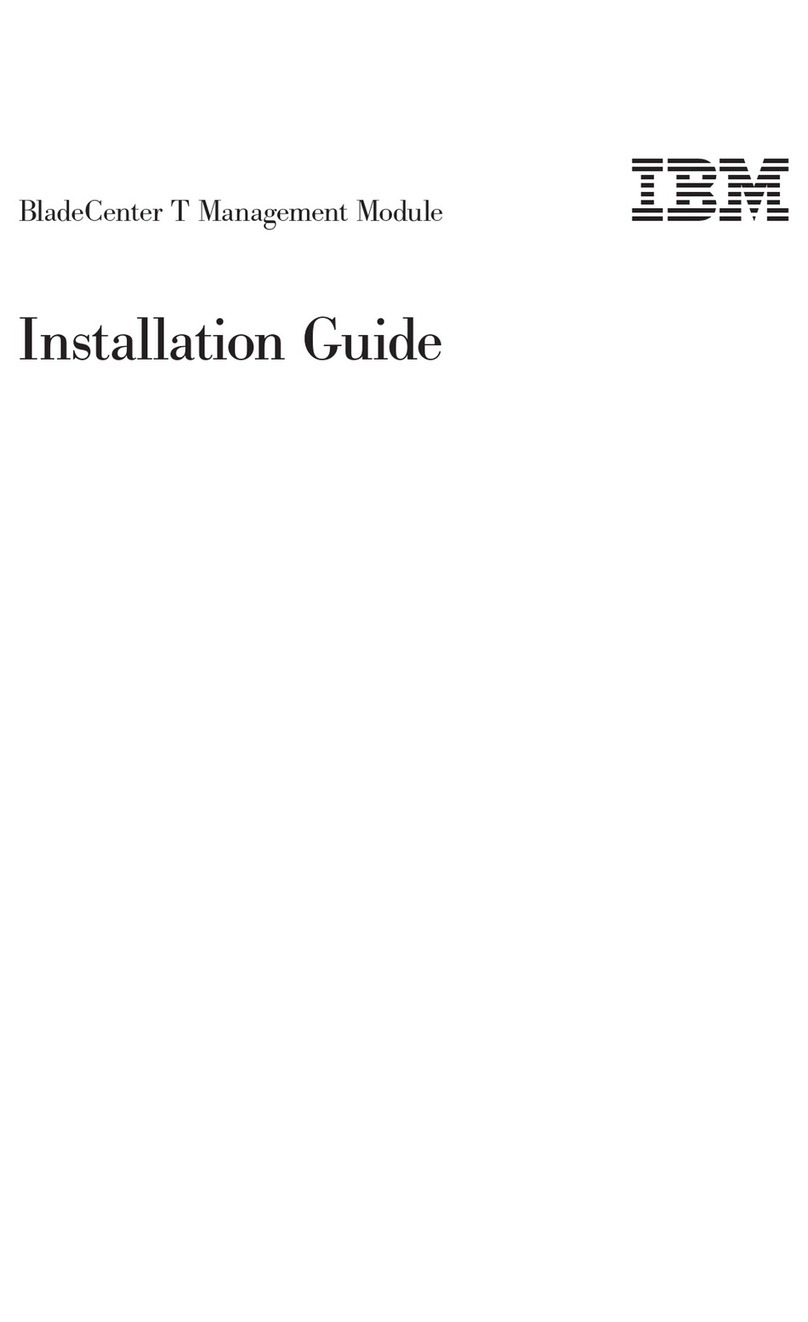
IBM
IBM BladeCenter T Series installation guide

D&R ELECTRONICS
D&R ELECTRONICS FPC8TL-PIC Installation & operation manual
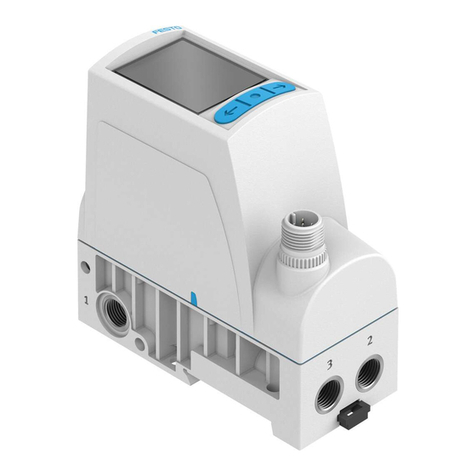
Festo
Festo VPPI S1D Series operating instructions

Showlight
Showlight DESK 192B MINI user manual
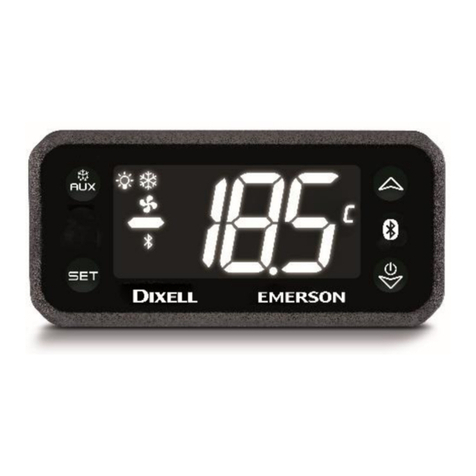
Emerson
Emerson DIXELL XR77CHC Installation and operating instructions
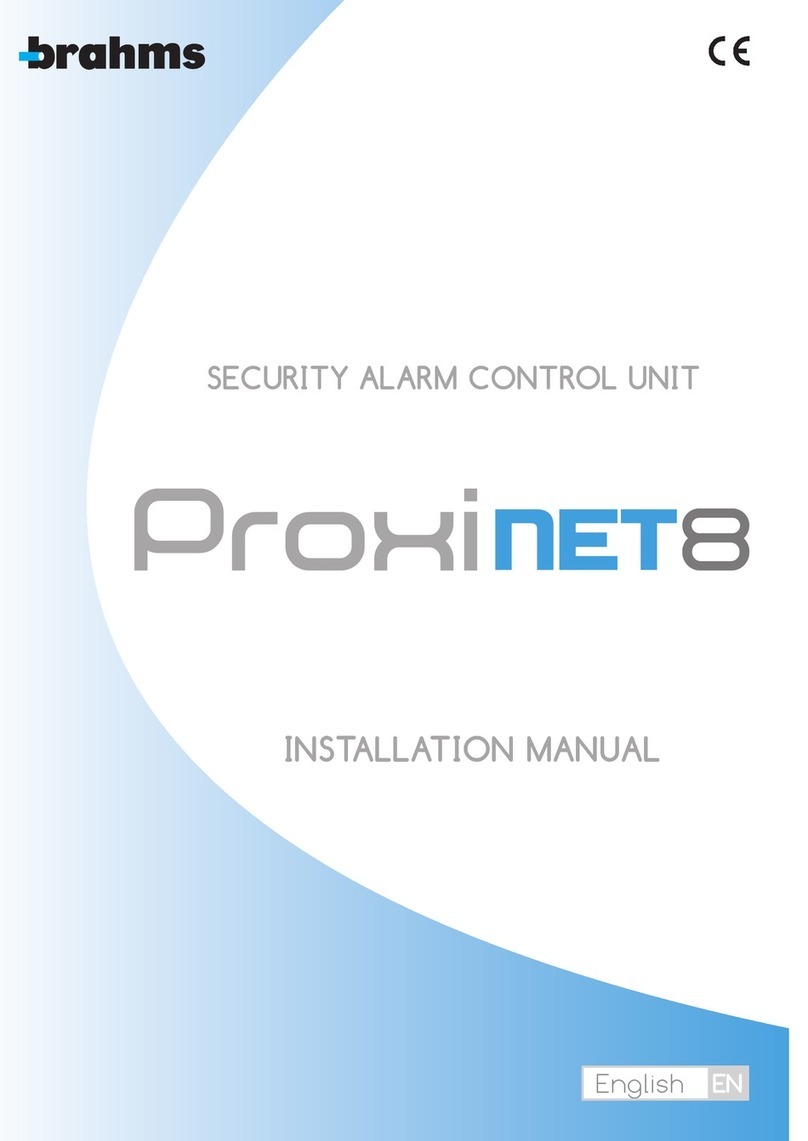
Brahms
Brahms proxinet8 installation manual

